Picus flavinucha
IUCN
LCBasic Information
Scientific classification
- name:Picus flavinucha
- Scientific Name:Picus flavinucha,Greater yellownape
- Outline:Climbing birds
- Family:G.Woodpecker
Vital signs
- length:30-36cm
- Weight:122-180g
- lifetime:About 10-15 years
Feature
Yellow throat, long yellow crest, black tail
Distribution and Habitat
The Greater Yellow-crowned Woodpecker is distributed in the Indian subcontinent and southwest China, including Bangladesh, Bhutan, Cambodia, China, India, Indonesia, Lao People's Democratic Republic, Malaysia, Myanmar, Nepal, Thailand and Vietnam.
The Greater Yellow-crowned Woodpecker is distributed in Yunnan, Tibet, Sichuan, Guangxi, Fujian and Hainan Island in China.
The Greater Yellow-crowned Woodpecker mainly inhabits the evergreen broad-leaved forests in the middle and low mountains below 2000 meters above sea level. It is rarely found in subtropical mixed forests, pine forests and secondary bushes at an altitude of 800-2000 meters.
Appearance
The male greater yellow-crested woodpecker has a dark olive-brown forehead, top of head and sides of the head, with maroon on the forehead and top of the head. The occipital crown is golden yellow or orange, the entire upper body and inner flight feathers are bright yellow-green, and the primary flight feathers are dark brown. There are broad dark brown horizontal spots on the outside of the wing tips; the inner flight feathers have green outer feathers and black inner feathers with dark brown horizontal spots. The surface of the other two wings is the same color as the back, the tail feathers are dark brown, and the base of the central tail feathers is green. Chin and throat are lemon yellow. The front neck is brown with green spots, mixed with white stripes. The chest is dark olive brown, and the rest of the lower body gradually turns to olive gray. The female bird is similar to the male bird, but has a chestnut upper throat and a white lower throat with thick black vertical stripes.
Details
The Greater Yellownape is a larger green woodpecker. The difference between it and the Yellow-crowned Green Woodpecker is that it does not have a red head. There are 8 subspecies.
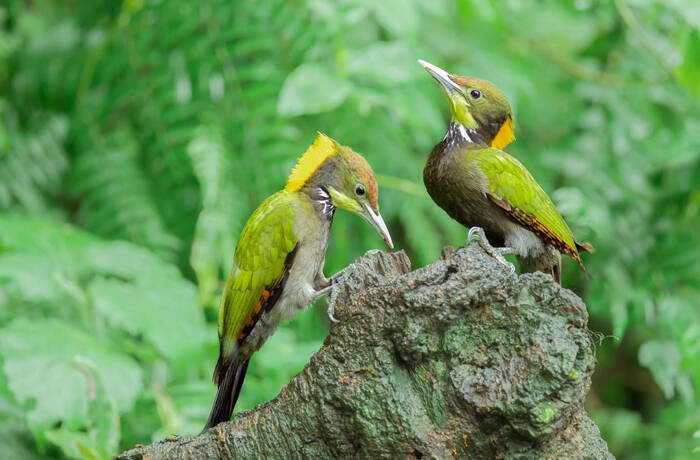
Woodpeckers knock on trees about 500-600 times a day, pecking at an extremely fast speed, almost twice the speed of sound, so their heads are inevitably subjected to very severe vibrations, but they will neither suffer from concussions nor headaches. It turns out that there are at least three layers of shockproof devices on the woodpecker's head. Its skull structure is loose and full of air. There is also a tough outer meninges inside the skull. There is a narrow gap between the outer meninges and the brain, which contains liquid, which reduces the fluid transmission of shock waves and plays a role in shock absorption. Because sudden rotational movement is more likely to cause brain damage than linear horizontal movement, there are developed and powerful muscles on both sides of its head to play a role in shock prevention and shock absorption.
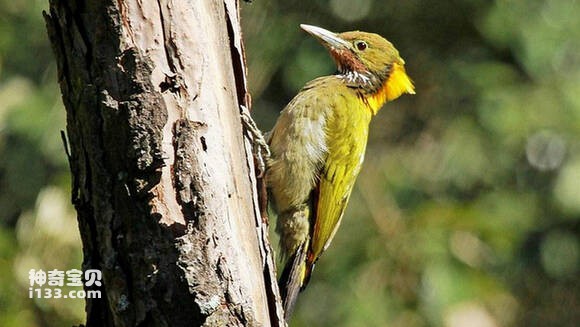
The Great Yellow-crowned Woodpecker is a resident bird. It mainly feeds on insects, and sometimes also eats plant seeds and berries. It often moves alone or in pairs. It often travels back and forth between tree trunks, climbing and foraging along the trunks, and sometimes also moves and forages on the ground. Its flight is in a wave-like manner. The call is similar to that of the Black-naped Woodpecker, mainly a slow "chup" or "chup, chup" followed by intermittent rapid sounds.
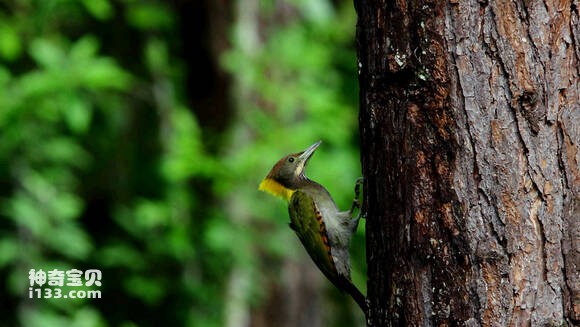
Every morning, the Great Yellow-crowned Woodpecker begins to knock on the tree trunk with its beak, making a "tap, tap..." sound in the silent forest. If it finds a bug somewhere on the trunk, it will cling to the tree tightly, with its head and beak almost vertical to the trunk, first peck the bark, then hook out the pests one by one with its tongue and eat them, and also stick out the eggs with mucus. When it encounters insects hiding in the passages deep inside the tree trunk, it will also use the ingenious trick of "beating the drum to drive away the insects". It will beat the passages with its mouth, making a special drumming sound that frightens the insects. Under the stimulation of the sound waves, the insects will become dizzy and scurry around, often trying to escape from the hole, but they will be caught and eaten by the woodpeckers waiting here. They usually have to completely eliminate the small capsule insects on the entire tree before moving to another tree. If they encounter a tree with serious insect infestation, they will work on this tree for several days in a row until all the pests are eliminated.
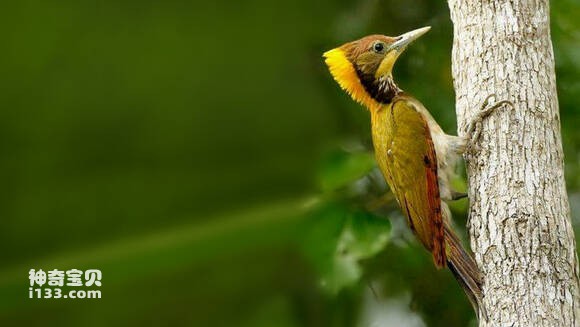
The breeding season of the Great Yellow-crowned Woodpecker is from April to June. It usually nests in tree holes. They often choose rotten tree trunks to dig their nests, and the nest holes are made by the male and female birds themselves. The height of the nest hole is generally 1.5-6 meters from the ground, and most of them are between 3-5 meters. Each nest lays 3-4 eggs, sometimes as few as 2 and as many as 5. The eggs are white and 26-32 mm × 21-24 mm in size. Males and females take turns incubating the eggs.
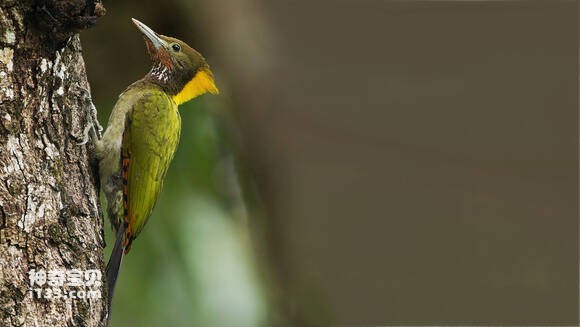
Listed in the IUCN Red List of Threatened Species in 2018 ver 3.1 - Least Concern (LC).
Listed in China's "National Key Protected Wildlife List" (February 5, 2021) Level 2.
Protect wildlife and eliminate game.
Maintaining ecological balance is everyone's responsibility!








